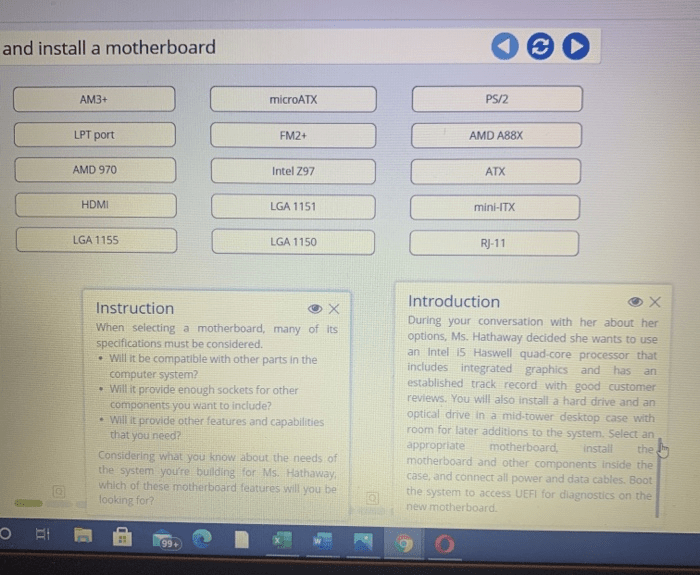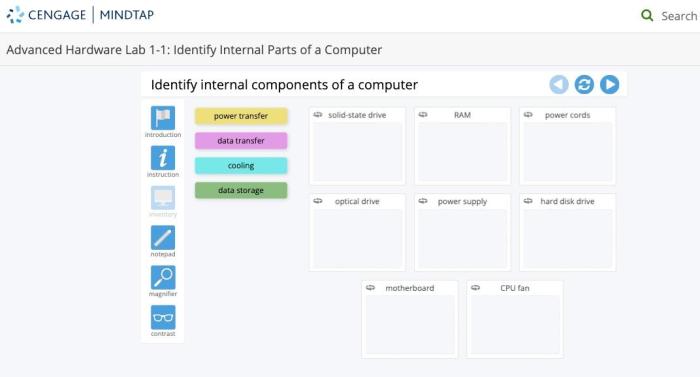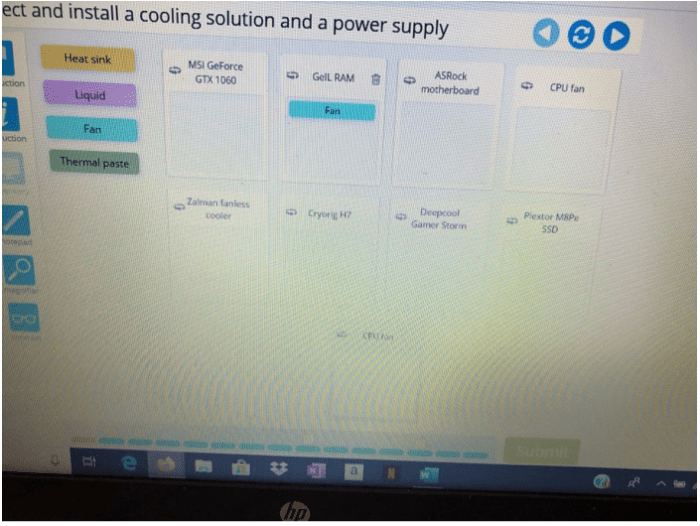Advanced hardware lab 2-5: select and install a motherboard – Advanced Hardware Lab 2-5: Selecting and Installing a Motherboard introduces the fundamental concepts and practical steps involved in choosing and installing the central component of any computer system – the motherboard. This comprehensive guide empowers you with the knowledge to make informed decisions, ensuring a seamless and efficient computing experience.
Motherboards serve as the backbone of a computer, connecting all vital components and facilitating communication between them. Understanding the types of motherboards available, their specifications, and the installation process is crucial for building or upgrading a computer system. This lab provides a step-by-step approach to motherboard selection and installation, equipping you with the skills to tackle this task with confidence.
Advanced Hardware Lab 2-5: Select and Install a Motherboard

Advanced Hardware Lab 2-5 is a course that provides students with the opportunity to learn about the hardware components of a computer system. The course covers topics such as selecting and installing a motherboard, configuring a computer system, and troubleshooting hardware problems.
The purpose of this lab is to teach students how to select and install a motherboard. A motherboard is the main circuit board of a computer system. It connects all of the different components of the computer, such as the CPU, memory, and storage devices.
When selecting a motherboard, it is important to consider the following factors:
Types of Motherboards
There are many different types of motherboards available. The type of motherboard you need will depend on the type of computer you are building. The following table lists the different types of motherboards and their specifications:
| Type | Socket | Chipset | Memory Slots | Expansion Slots |
|---|---|---|---|---|
| ATX | LGA 1151 | Intel Z370 | 4 | 7 |
| MicroATX | AM4 | AMD X470 | 4 | 5 |
| Mini-ITX | LGA 1151 | Intel H310 | 2 | 3 |
When selecting a motherboard, it is important to consider the following factors:
- The type of CPU you are using
- The amount of memory you need
- The number of expansion cards you need
- The form factor of your computer case
Installation Process
Once you have selected a motherboard, you need to install it in your computer case. The installation process is relatively simple, but it is important to follow the steps carefully. The following steps will guide you through the installation process:
- Open the computer case and remove the side panel.
- Locate the motherboard mounting holes in the case.
- Align the motherboard with the mounting holes and insert the screws.
- Connect the CPU to the motherboard.
- Install the memory modules in the motherboard.
- Install the expansion cards in the motherboard.
- Connect the power supply to the motherboard.
- Close the computer case and power on the system.
The following illustrations show the steps involved in installing a motherboard:




Troubleshooting, Advanced hardware lab 2-5: select and install a motherboard
If you encounter any problems during the motherboard installation process, refer to the following troubleshooting tips:
- Make sure that the motherboard is properly seated in the computer case.
- Make sure that the CPU is properly installed in the motherboard.
- Make sure that the memory modules are properly installed in the motherboard.
- Make sure that the expansion cards are properly installed in the motherboard.
- Make sure that the power supply is properly connected to the motherboard.
Clarifying Questions
What are the key factors to consider when selecting a motherboard?
When selecting a motherboard, consider the following factors: compatibility with your processor, memory type and capacity, expansion slots, form factor, and additional features such as built-in Wi-Fi or Bluetooth.
What are the common issues that may arise during motherboard installation?
Common issues during motherboard installation include incorrect CPU or memory placement, loose connections, and BIOS configuration errors. Ensure proper alignment and secure connections, and refer to the motherboard manual for BIOS settings.

